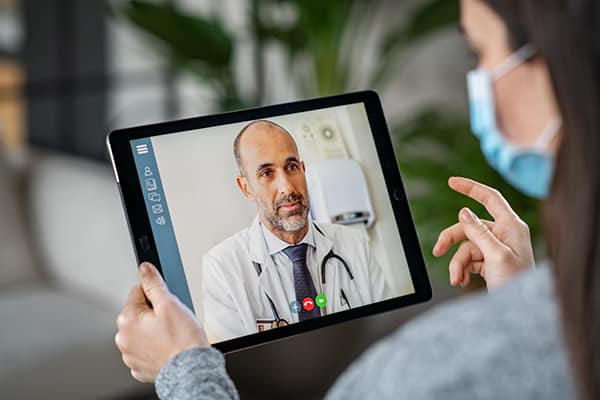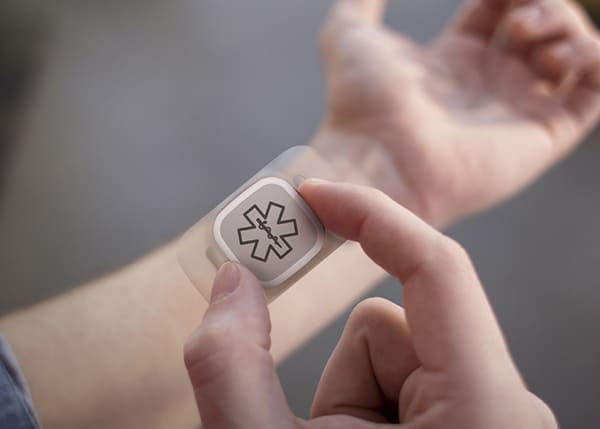EMERGING HEALTHCARE INDUSTRY TRENDS: #1 The Shifting Point of Care
Every industry was shaped by 2020, with the challenges of a pandemic year, introducing new ideas of how to work and live and accelerating shifts that were already in motion. Above all others, the healthcare industry was significantly impacted by these changes. After a year of research and discovery, our team uncovered 13 significant healthcare industry trends to track in 2021, from how we care for patients to developing new treatments.
Here, we look at the first major trend: The Shifting Point of Care.
If you haven’t heard, everything about everything in the consumer world is in flux. The COVID-19 pandemic, advancing technology, a concerted shift toward human-centric insight and design… it’s all changing the way we interact with services, products, and the world at large.
At Thrive, we find all of this super exciting, but nowhere is the activity more impactful than in the healthcare world.
Our team has spent the last year deep in research and discovery, understanding and investigating the macro and micro digital health and design and usability trends that capture the medical space’s ongoing transformation. We have identified thirteen significant insights that will impact patient care now and into the future.
We have curated these insights (as well as our enthusiasm for problem-solving in the medical world) into a healthy blog series studded with thoughts about the more immense forces and features that will shape the future of healthcare. Taken together, it’s a primer on what we expect to be digging into for clients this year and seeing in our own Doctors’ offices soon. Without further ado, however, let’s talk trends.
#1 The shifting point of care
Due to advancements in technology and the need from clinicians, consumers, and payers for care outside the hospital, breadth of treatment will continue to become more available at both ASCs and patients’ homes.
What is The Shifting Point of Care?

Examinations, therapies, and treatments are migrating outside of the hospital and into new points of care. This shift in the point of care facilitated changing laws and regulations, allowing patients to receive care in a broader range of settings, including in their own homes.
The key drivers of this trend are:
– Value-based payment methodologies: The rising cost of care is pushing patients to find more accessible care options that better meet their needs.
– Practice acquisition: As hospitals acquire independent practices, the cost of care often grows, and patients seek alternative care options.
– Physician shortage: The US is facing a physician shortage that will only grow in the coming years. As time goes on and the deficit grows, finding ways for fewer doctors to safely and effectively see more patients will be vital.
– An aging population: The US’s median age has grown from 33 in 1990 to 38 today. This trend is expected to continue as life expectancy increases and the birth rate decreases, which will increase the need for more efficient and accessible care.
– Infrastructure issues: Transit to and from clinicians can be challenging in rural and urban areas, especially for the elderly and those with limited mobility. Solutions that solve this point of care issue will be increasingly valuable and vital for equitable care.
– COVID-19 accelerated adoption: Stay-at-home orders and measures that hospitals have taken during the COVID-19 pandemic have created an enormous increase in the need for digital care.
Why it matters.
As technology improves and products such as portable diagnostics and wearable sensors become feasible and more prevalent, business models will need to adapt to this new market landscape. More intuitive, human-centered designs that are patient-friendly will be required to ensure delivery at the point of care is efficient and does not impact clinical workflows.
By taking into account consumers’ physical and cognitive abilities across income levels and demographics, mass adoption and accommodation will be smoother and more effective. This technology-enabled shifting point of care is an incredible opportunity for rural populations and other disadvantaged groups who have historically had limited access to demanding and receiving care.
The Opportunity: More efficient patient care with increased outpatient capacities
As Ambulatory Service Centers (ASCs) and Office-based Labs(OBLs) become more popular and widely available (ASCs are expected to grow more than 5% in 2021 alone), a growing list of procedures will become available at these locations as well, expanding care options for patients.
ASCs drive efficiency and accessibility through streamlined care since 65% of these facilities focus on single specialties. We can expect that as this trend of grouping services under one roof – which we’d dub “focus factories” – continues to grow, patients will be looking for more streamlined and efficient care solutions. In turn, medical suppliers will find opportunities in ASCs by providing tailored solutions for them.
https://www.youtube.com/watch?v=7a2kR-yaeK0&t=2s
Philips currently offers SymphonySuite, a one-stop solution for planning and expanding service offerings that include rewards, financing, training, consulting, equipment, and devices. We expect that more services similar to this one will become available in the future.
The Opportunity: More options for rural patients
As rural areas gain access to high-speed internet, remote care for far-flung patients will become a colossal opportunity. This trend has been accelerated significantly by the COVID-19 pandemic, and we expect that it’s here to stay as both an alternative and a complement to traditional in-person care — especially for those with limited access to care.
Healthcare networks that cover rural areas are already expanding virtual health programs, which offer lower cost and more accessible urgent care services for rural populations. And the Google-backed IPO One Medical is becoming a benchmark in digital-first primary care, offering a yearly-fee concierge service.
The Opportunity: Better patient outcomes more conveniently, with home treatments
As more and more point of care treatment options move from the healthcare environment to the home, patients become empowered by technology to better comply with treatment protocols. Already an $11 billion market, remote treatment is expected to grow an additional 33% between 2019–2025, with innovators in this space focusing efforts on gamification, usability, and design.
Currently, app-based treatments combine technology with traditional medicine and deliver tailored therapies based on real-time patient data. We expect to see more of this. For example, Cove’s migraine treatment app combines an in-app questionnaire and symptom tracker and matches patients with physicians and treatment plans, including prescription drugs.
Robotic-assisted therapies are becoming increasingly popular and combine artificial intelligence and robotics to give patients more effective occupational and physical therapies. The Mabu robot is an example in this space, helping patients manage adherence to complex conditions at home.
Let THRIVE Help You Keep a Pulse on the latest Healthcare Industry Trends
Responding to upcoming trends like the shifting point of care will be vital for long-term healthcare technology success. And none of these trends operates in a bubble — the shifting point of care is informed and influenced by next week’s trend: hyper-personalized care. Check-in each week as we explore the 13 trends in this series that will be shaping the healthcare industry over the next year (and beyond).
THRIVE is an expert healthcare technology consultant with years of proven experience in the industry. We’d love to talk more about how we can help you respond to the shifting trends so that you can protect your business now and into the future. Contact THRIVE today.
RELATED POSTS
If you missed any of the previous posts in this blog series on the future trajectory of healthcare, you can find them here:
Week 2: The Hyper Personalization of Care
Week 3: Expanding the Continuum of Care
Week 4: Patient Empowerment
Week 5: Physician Empowerment
Week 6: Orchestrating Operating Room Efficiency
Week 7: Human-centered Healthcare Design
Week 8: Improving Medical Device UX Design
Week 9: Improving Contextual Design & Cognitive Empathy
Week 10: Enhanced Data Visualization Tools
Week 11: The Increasing Prevalence of Robot-Assisted Surgery
Week 12: Behavioral Design for Medical
Week 13: Humanized Patient-Provider Interactions







